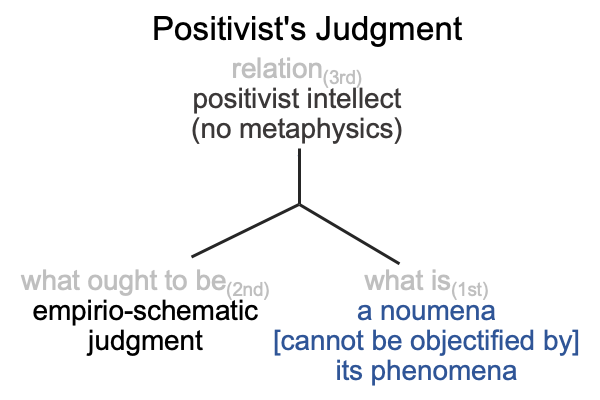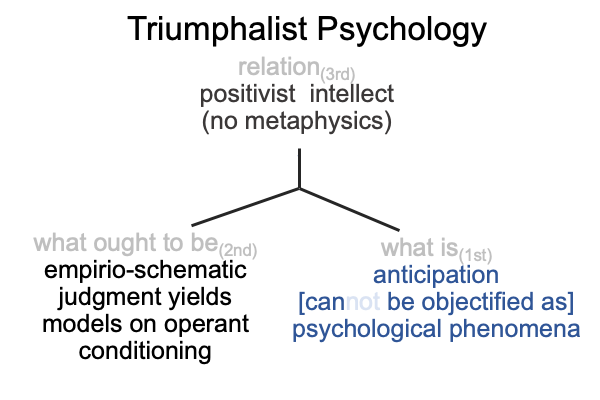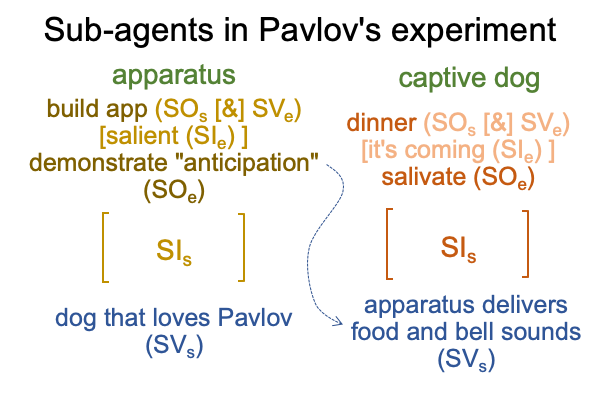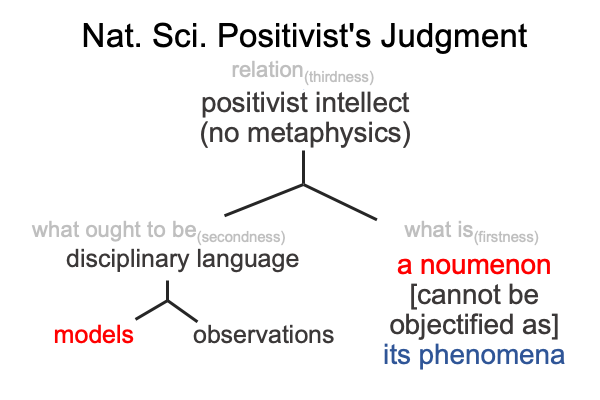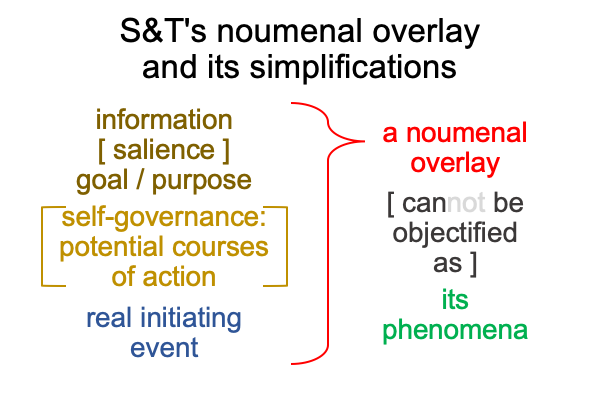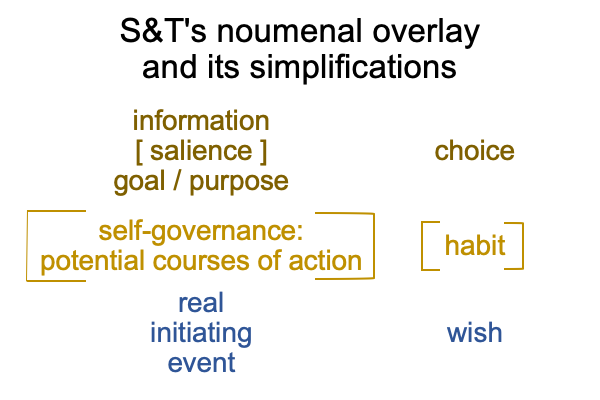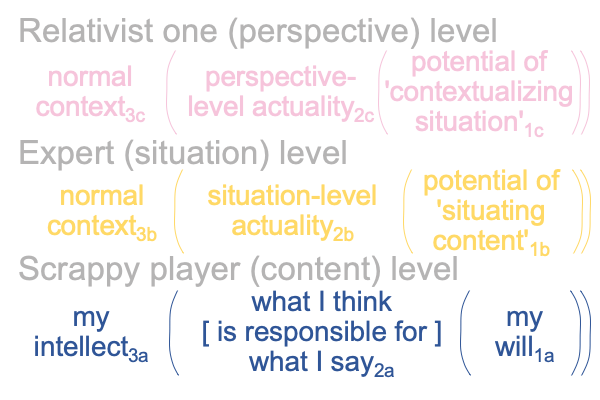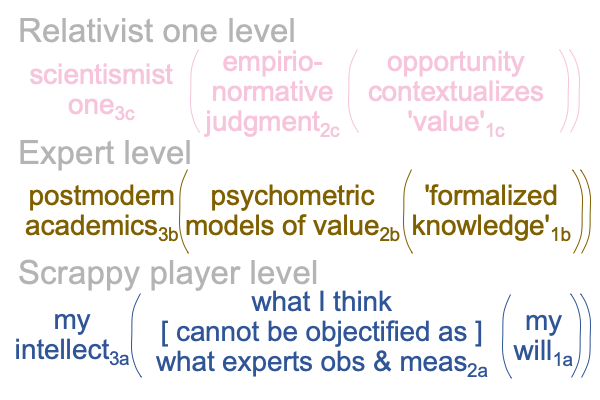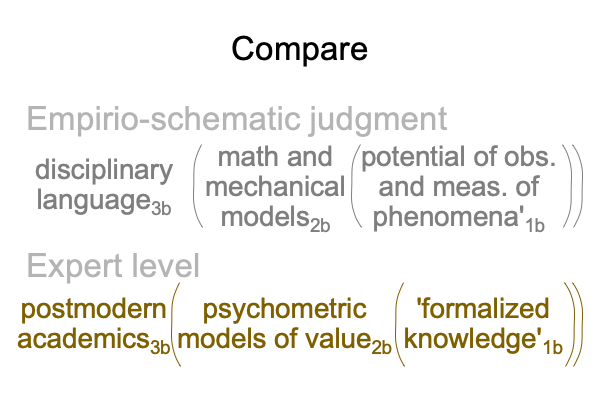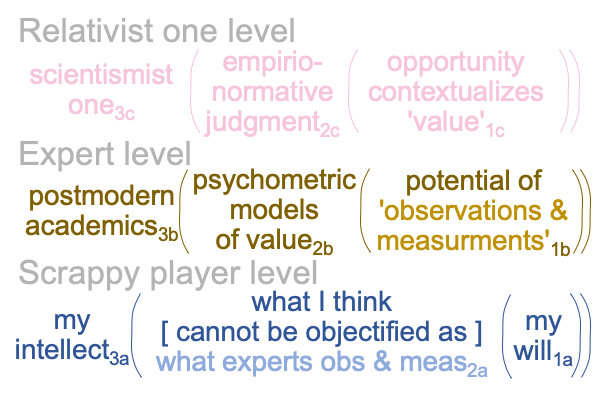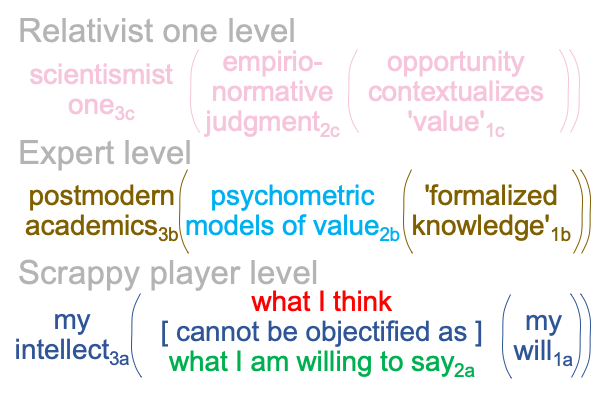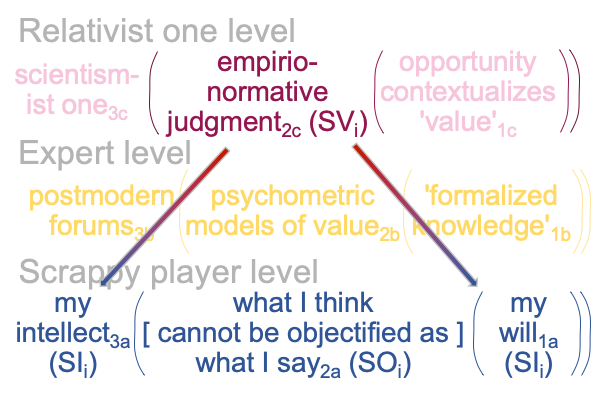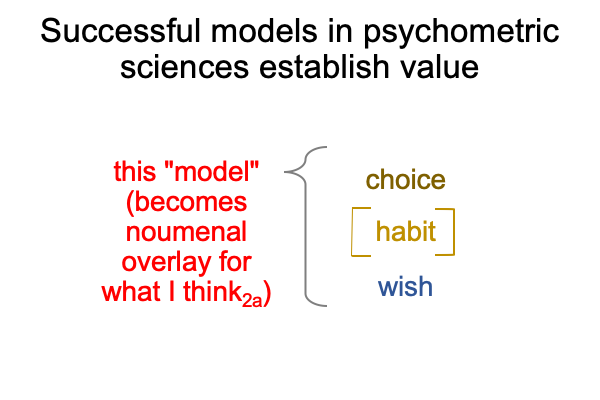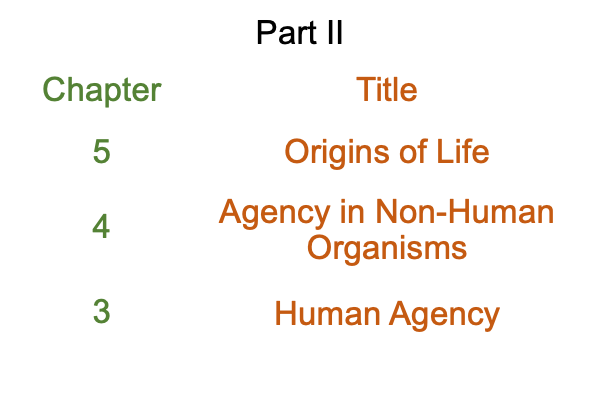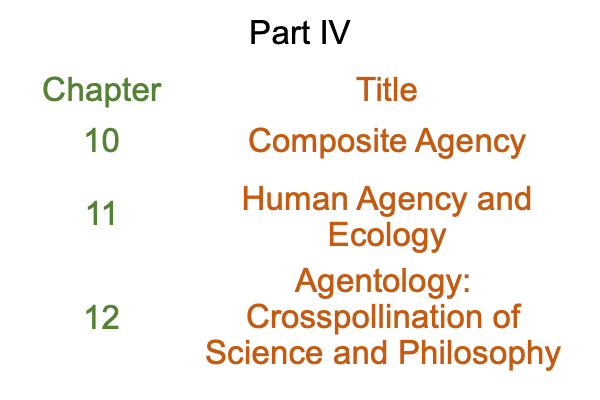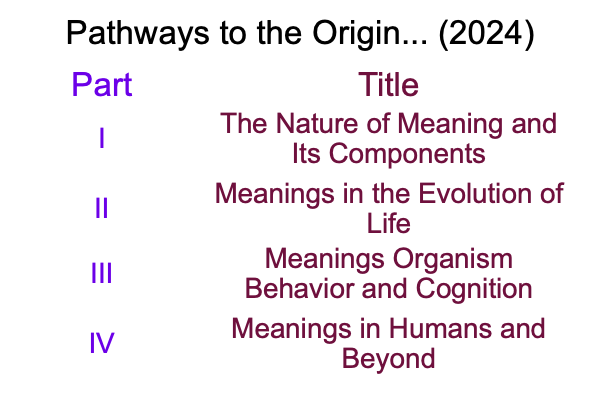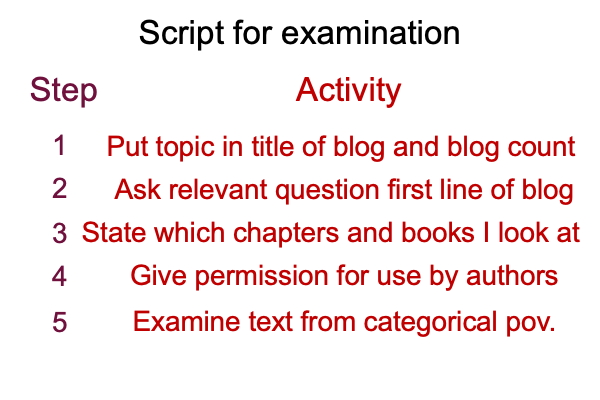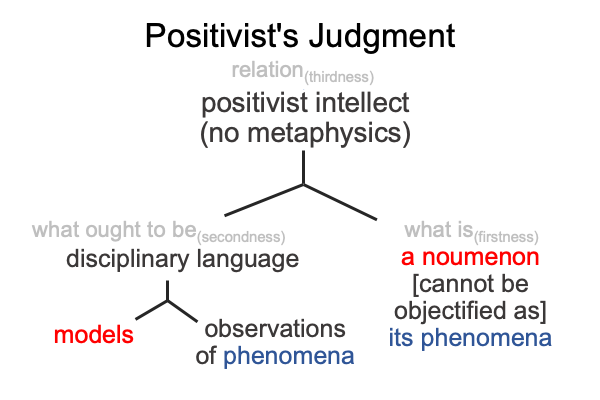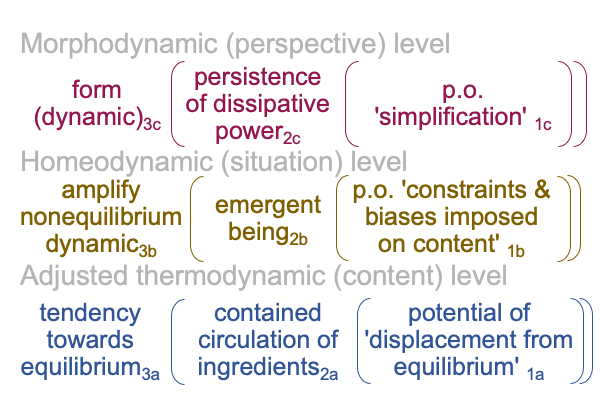Looking at Alexei Sharov and Morten Tonnessen’s Chapter (2021) “Agency In Non-Human Organisms” (Part 6 of 7)
0579 Section 6.7 concerns consciousness and cognition in animals.
In this examination of Pavlov’s experiment, a question concerning consciousness and cognition arises within two agencies, that of Pavlov the scientist and that of Pavlov’s dogs.
0580 This suggests a parallel between Pavlov, the scientist, and his dogs, the subjects of scientific inquiry.
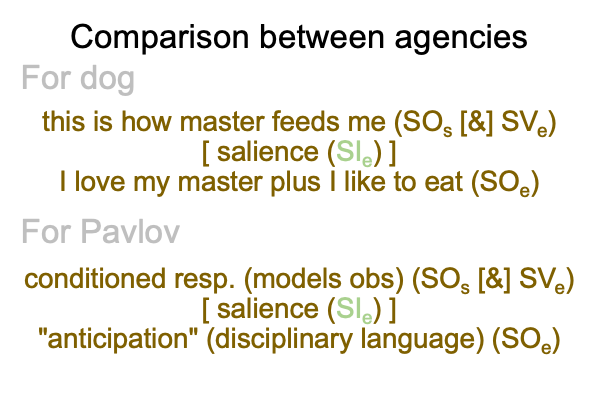
0581 Now, the above dyads represent matter where the form is a real initiating (semiotic) event.
0582 For the dogs, the form is a serving of meat while hearing a bell. Forget about all that apparatus business. That is for master to decide. The drool occurs when the bell rings2, in the normal context of Pavlov’s apparatus3, signifying the potential of dinner1. This fits the common person’s use of the world “anticipation”.
Indeed, the exemplar sign-relation depicts an innate expectation. The master feeding me2b (SVe) stands for my love for master and my master’s expectations of me2c (SOe) in regards to the rituals of being fed by master3c operating on the possibility that the master is pack leader1c (SIe). Or, something like that.
0583 For Pavlov, the event is an experiment, designed to produce data through measuring volumes of canine slobber. The measurements2a (SVs) stand for a conditioned response2b (SOs) in regards to the way that psychologists3b conduct experiments that mean ‘something’1b (SIs). Then, the conditioned response2b (SVe) stands for “anticipation”2c (SOe) in regards to making sense3c of this scientifically relevant ‘something’ by offering a label1c (SIe). This introduces a novel empirio-schematic term into the psychological lexicon.
0584 What does this have to do with consciousness and cognition?
0585 Obviously, I have two referents for the term, “anticipation”.
0586 So, a semiotic tool may be useful in sorting out this issue of labeling in a Lebenswelt of explicit abstraction.
0587 The Greimas square is a semiotic tool that turns out to be useful for ascertaining the location of a spoken word in a system of differences.
How does the Greimas square operate?
The Greimas square is a purely relational structure constructed of four locations. Each location corresponds to the corner of a square. The corners are labeled A, B C and D. Each label represents a rule. A is the focal spoken word. B is a spoken word that contrasts with A. C is a word that “speaks against” (contradicts) B and complements A. D is a word that contrasts with C, contradicts A and complements B.
0588 Here is a picture.
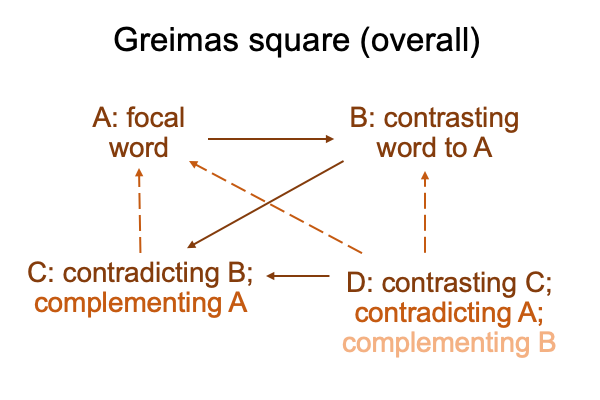
0589 I can apply the Greimas square to what Pavlov accomplishes.
The focal word (A) is the common use of the term, “anticipation”. The spoken word is an explicit abstraction. When the bell rings, the dog anticipates a bowl of meat. The bell brings the meat to um… consciousness.
The contrasting word (B) is the technical use of the term, “anticipation”. When the bell rings, the dog salivates. Salivation is not regarded as a subagent doing what it is supposed to do. Rather, salivation is evidence of an unconscious conditioned response. Is this where the word, “cognition”, fits in?
The word (C) that contradicts (B) and complements (A) is “consciousness”. For common use, anticipation entails conscious awareness or a process that leads to conscious awareness. For Pavlov’s dogs, the bell brings meat to consciousness.
The term (D) that contrasts with (C), speaks against (A) and complements (B) is “operant conditioning”. Operant conditioning is regarded as an unconscious process.
0590 Here is a picture.
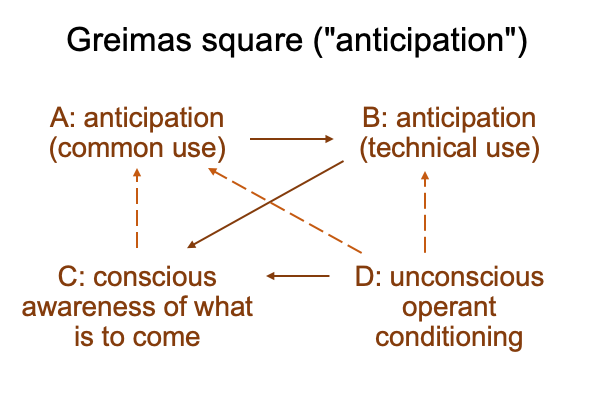
0591 What does this have to do with consciousness and cognition?
Does Pavlov’s scientific breakthrough in psychology demonstrate that an explicit abstraction, that everyone applies to human consciousness, may be grounded in unconscious cognitive processing?

